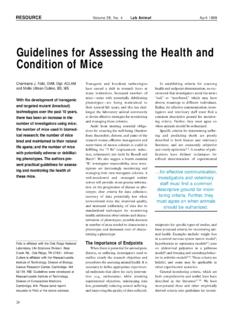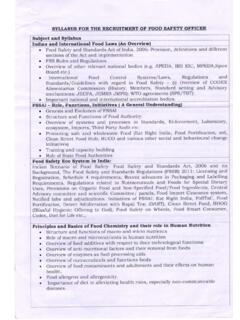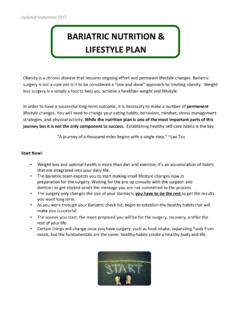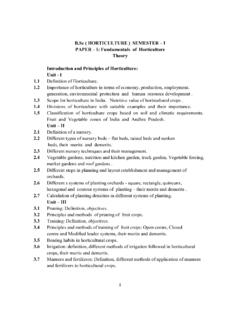Transcription of Breeding Strategies for Maintaining Colonies of Laboratory ...
1 Breeding Strategies for Maintaining Colonies of Laboratory MiceA Jackson Laboratory Resource ManualTh is manual describes Breeding Strategies and techniques for Maintaining Colonies of Laboratory mice. Th ese techniques have been developed and used by Th e Jackson Laboratory for over 75 years. Th ey are safe, reliable, economical, effi cient, and ensure that the mouse strains produced are genetically well defi ..1 Fundamentals of Mouse Reproduction ..2 Sexual maturity, Reproductive lifespan, Gestation, Litter size, Weaning ageBreeding Performance Factors.
2 4 Birth defects, Hybrid vigor, Behavior, Mutations, Temperature, Humidity, Light, Noise, Weather, Odors, Handling nutrition , Health Optimizing Breeding Performance ..5 Non-productive breeders, Time of mating, Accurate recordsBreeding Schemes ..7 Simple and complex Breeding schemes, Ovarian transplantation, Maintaining transgenic strains, Maintaining strains with multiple mutations, Maintaining Cre-lox strains, CryopreservationGenetic Quality .. 11 Maintaining genetic quality, Th e Jackson Laboratory s genetic quality and stability programsCosts of, Sizing, and Expanding Mouse Colonies .
3 12 Step-by-step examples, including formulas and sample calculatonsJAX Services for Mouse Colony Management .. 15 Dedicated Supply, Custom Breeding , Special Crosses and Stocks, Custom Cryo, Speed Cryo, Sperm Cryo CryoRecovery, Speed Expansion, RederivationJAX Resources for Mouse Colony Management .. 16 JAX -CMS, Courses, Online resources, Technical support Glossary ..18 Appendix ..19 References ..25 Table of Contents 2007 The Jackson LaboratoryIntroductionThe Jackson Laboratory 1Th e Laboratory mouse is playing an increasingly important role in biomedical research.
4 Due to mutagenesis, transgenic, and gene-targeting technologies, the number of available mouse models is escalating. So are the costs, mouse room space, and related resources needed to accommodate these mice. Due to all these factors, the art and science of managing mouse Colonies effi ciently is more important than ever. Colony managers oft en consult us for advice and rightly so, for our mouse husbandry experts have been using and refi ning mouse colony management techniques for over 75 years. Th ese techniques are safe, reliable, economical, effi cient, and ensure that the mouse strains produced are genetically well-defi ned.
5 Th is Manual provides valuable insights into these techniques for those who maintain their own research Colonies . Its contents are guidelines: if you have questions or need more specifi c information, contact our Technical Support group at you do not have the time, facilities, or other resources to maintain or manage your own mouse Colonies , JAX Services can help. For information about our Breeding and Colony Management Services, please see page 152 The Jackson LaboratoryTo properly manage a mouse colony, an understanding of the fundamentals of mouse reproductive biology is essential.
6 Some of these fundamentals are briefl y reviewed below. Sexual maturity. Generally, Laboratory mice become sexually mature between fi ve and eight weeks of age. Males of most strains usually mature sexually by six weeks of age. DBA/2J (000671) and C3H/HeJ (000659) mice are precocious: females can conceive when they are as young as 23 days old. However, mice bred that early generally produce small litters. Th erefore, we usually mate mice when they are six to eight weeks old. Reproductive life span. Typically, Laboratory mice can breed for about 7-8 months, producing four or more litters (Table 1).
7 However, some strains produce only one or two litters, usually because strain-specifi c characteristics aff ect their fertility. AKR/J mice (000648) develop leukemia, and breeders must generally be replaced when they are about six months old. C3H/HeJ mice may stop Breeding early because they have a high frequency of ovarian cysts and tumors. NOD/ShiLtJ (001976) females may develop diabetes when they are 12 weeks old, but their reproductive lives can be extended to fi ve months with foot pad injections of Freund s Adjuvant.
8 Reproductive life spans for each strain are average values. If a pair is Breeding well beyond its expected reproductive life span, retain it until the female is not pregnant within 60 days of her previous litter s birth. Fertility. Fertility of inbred strains varies. For example, whereas nearly all Breeding pairs of C3 HeB/FeJ (000658) mice are fertile, less than half of C57L/J (000668) breeder pairs are. Gestation. Th e gestation period for Laboratory mice is generally consistent within a strain but varies among strains.
9 For example, it is days in C57BL/6J (000664) mice, 20 days in BALB/cJ (000651) mice, and 21 days in A/J (000646) mice. Generation time. Generation time in Laboratory mice is about 12 weeks: ~3 weeks gestation, 3- 4 weeks suckling, and 5-6 weeks until sexual maturity. Litter size. Litter size varies among strains (Table 1), ranging from about two to three pups/litter in some poorly Breeding 129 substrains to 12 or more pups per litter in the FVB/NJ (001800) and NOD/ShiLtJ (001976) strains. Weaning age.
10 In a mouse husbandry context, weaning refers to removing a pup from its home pen (rather than to the time a pup stops nursing and starts eating solid food). Generally, Laboratory mice are weaned between 18 and 28 days of age (Table 1). Weaning age depends on weanling size and maturity. Although most strains are weaned when they are 21 days old, some benefi t from being weaned when 28 days old. We do not wean mice before they are 17 days old without transferring them to a foster of Mouse ReproductionMouse oocytesThe Jackson Laboratory 3 BALB/cJ**(000651)Fundamentals of Mouse ReproductionTable 1.










